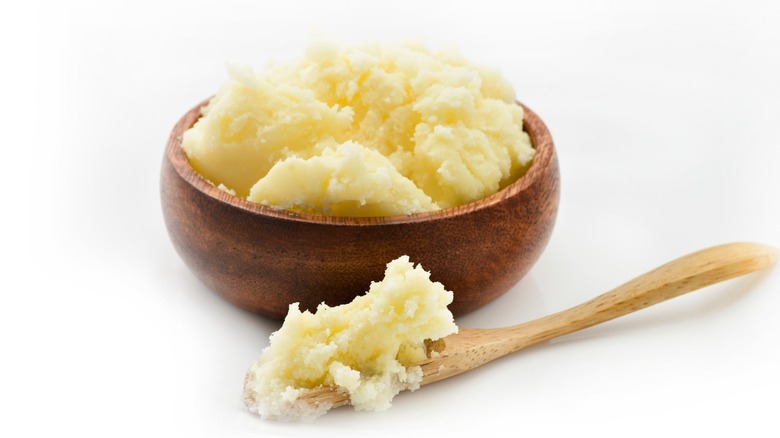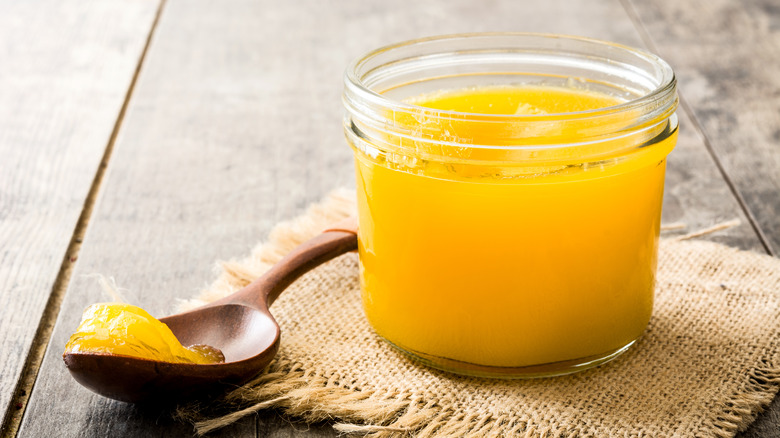The Versatile Fat Professional Chefs Never Buy Store-Bought
Fat has gotten a bad rap over the past few decades, with products marketed as low-fat, light, reduced-fat, and fat-free being deemed healthier alternatives. Aside from these products lacking in flavor, manufacturers add sugar, salt, and other additives to compensate for their lackluster taste, adding unnecessary calories and unhealthy ingredients. These unsatisfying foods lack the fat that keeps you full longer, leading to more frequent eating and negating any perceived health benefits that attracted you to them in the first place (per WebMD).
As the medical community sheds light on the benefits of fats, they note that not all fats are created equal. The American Heart Association recommends limiting saturated fat (found in foods like cream and butter) and avoiding trans fat (found in foods with hydrogenated oils like Crisco). However, unsaturated fats are beneficial to the body. These fats (found in foods like avocado, olive, and canola oil) lower "bad" cholesterol (LDL) and triglyceride levels, decrease the rate of cardiovascular disease, and provide the body with essential nutrients it can't produce on its own.
Cooking with fat enhances the flavor, texture, and pleasure of food. Fats can be used as a seasoning, cooking medium, or main ingredient, depending on the cuisine and its primary purpose. Professional chefs can alter how a dish tastes by changing which fat they use. Although most varieties are readily available at grocery stores, there is one fat that chefs prefer to make instead of buy.
Why chefs recommend making your own ghee
Regional cuisines tend to favor one fat over another. Mediterranean cuisines — including Italian, Greek, and Spanish — prefer cooking with olive oil, per Italia Delight. Depending on how the oil is needed, whether drizzled on a Caprese salad or used to sauté a protein, determines what variety is used. Indian and Pakistani cuisine, on the other hand, has been cooking with ghee for thousands of years.
Ghee is a type of clarified butter with a high smoking point that has gained popularity outside of Indian cuisine. While it's available in grocery stores, professional chefs like Shawn Matijevich of the Institute of Culinary Education prefer to make their own to ensure what the ghee is made of. "Ghee is one ingredient I recommend making instead of buying. It's super simple to make, and you don't always know the quality of the butter used when you buy ghee from the grocery store" (via Eat This, Not That).
Butter is comprised of water and milk fat from cow's milk. Ghee is easily made at home by heating butter until the water has evaporated and the milk solids separate from the fat. The solids are then strained out, and what remains is ghee. Ghee does not require refrigeration and is shelf stable at room temperature. Similar to coconut oil, it will solidify when cool. Making ghee from unsalted, grass-fed butter ensures you use the highest quality fat in your cooking (per Healthline).

